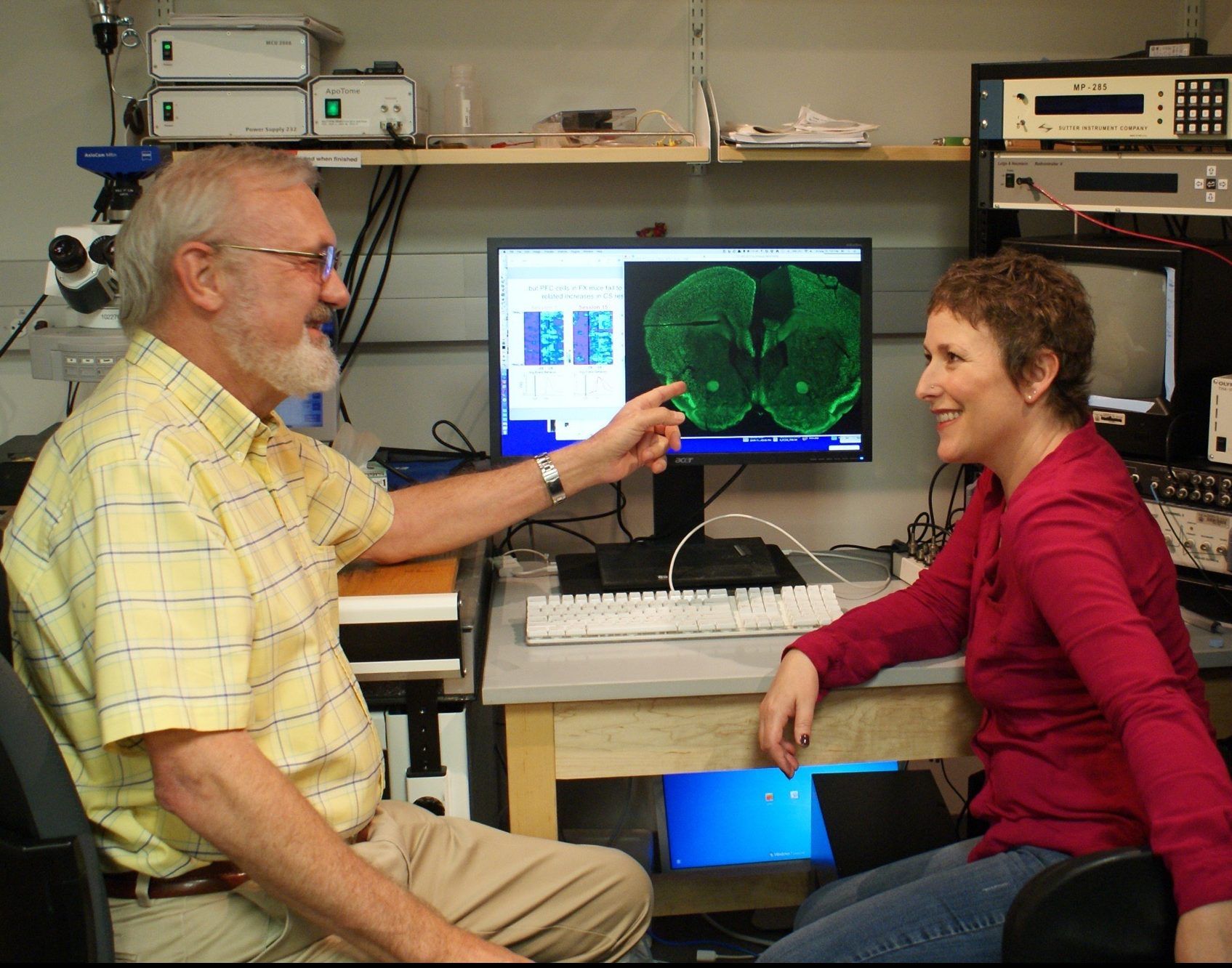Fragile X Cure One Step Closer with FRAXA Support of $1 Million in New Research
2016: 4 Countries - 10 Teams - $1 Millions
From finding new treatment targets, to pinpointing outcome measures for future clinical trials, to attempting to reactivate the gene which is silenced in Fragile X syndrome, these innovative scientists will bring us closer to a cure.
Improving Clinical Trials
Many parents of children with Fragile X know well the struggles of getting their children to sleep through the night. Mice and fruit flies engineered to mimic Fragile X Syndrome also have disrupted sleep. Drs. Westmark and Smith will test potential therapeutics in mice using sleep as an outcome measure and investigate whether sleep could be used as an outcome measure for future clinical trials.
The search is on for a simple blood test to measure how well a treatment works for an individual with Fragile X. Dr. Frank Kooy’s team investigates.
Testing Treatment Targets
One of the goals of FRAXA’s research program has been to find biological pathways affected in Fragile X that are amenable to treatment with small molecules (drugs). Past efforts have been successful, generating large numbers of treatment targets, and this year, Dr. Osterweil and Dr. Bardoni will study new promising targets.
All these treatment targets raise an important question: are these various neural pathways and targets related at some key point? Is there a critical node, a point where pathways connect, which would allow for the most effective treatment? Two projects funded last year are looking for just such critical nodes (see Vanderklish and Moine). Until a critical node is found, we may need combinations of drugs to best help people with Fragile X syndrome. Dr. Razak’s study of combination treatments aims to show us the best way forward and form the basis for success in clinical trials.
Reactivating the Fragile X Gene
The holy grail of Fragile X research is to reactivate the gene, FMR1, which is silenced in people who have the syndrome. Using genetic engineering, researchers can already switch on the gene in adult Fragile X mice, and correct symptoms in this way. Teams led by Dr. Peter Todd and Dr. Jeannie Lee will pursue gene reactivation in mice using the new technique, CRISPR.
Congratulations to the new grantees! The grand total of these awards is $1,022,000 over the next two years. Additional awards still to come!
Mechanisms of Tolerance to Chronic mGluR5 Inhibition
FRAXA supported research showing mGluR5 antagonist tolerance develops quickly in Fragile X models, guiding new strategies to prevent or overcome it.
Read More »Prefrontal Cortex Network (PFC) Dynamics in Fragile X Syndrome
The team has shown that Fragile X mice have major prefrontal cortex deficits in Fragile X mice. Finding ways to overcome this could reveal new intervention strategies.
Read More »Altered Neural Excitability and Chronic Anxiety in a Mouse Model of Fragile X
With a $35,000 grant from FRAXA, Dr. Peter Vanderklish at Scripps Research Institute, and colleagues, explored the basis of anxiety in Fragile X syndrome.
Read More »Preclinical Testing of Sleep-Wake Patterns as an Outcome Measure for Fragile X
FRAXA Research Foundation awarded $122,000 to Dr. Cara Westmark at the University of Wisconsin at Madison for studies of sleep disorders in Fragile X syndrome.
Read More »Which is the right FMRP for Therapeutic Development of Fragile X Syndrome?
Many forms of FMRP exist in the brain. This project aims to pinpoint which versions of the protein are most critical to restore for effective Fragile X treatments.
Read More »Biomarker Discovery and Validation for Fragile X Syndrome
This grant supported discovery of protein-based biomarkers for Fragile X to create objective outcome measures that translate from mouse studies to human trials.
Read More »Function of FMRP and Test of a Novel Therapeutic Approach in a Fragile X Mouse Model
FRAXA-supported work has identified DgkK as a critical enzyme lost in Fragile X. Drugs that raise DgkK levels may correct brain signaling and improve symptoms.
Read More »Correcting Defects in Astrocyte Signaling in Fragile X Syndrome
Astrocytes, brain cells which support neurons, do not transmit signals. Fragile X treatment strategies have been proposed based on correction of “astrocyte phenotypes”.
Read More »Sensory Hypersensibility in Fragile X Syndrome and BK Channel Openers
With $366,100 in FRAXA funding, researchers tested BK channel–opening drugs to fix sensory abnormalities in Fragile X mice; early results showed broad behavioral rescue.
Read More »








